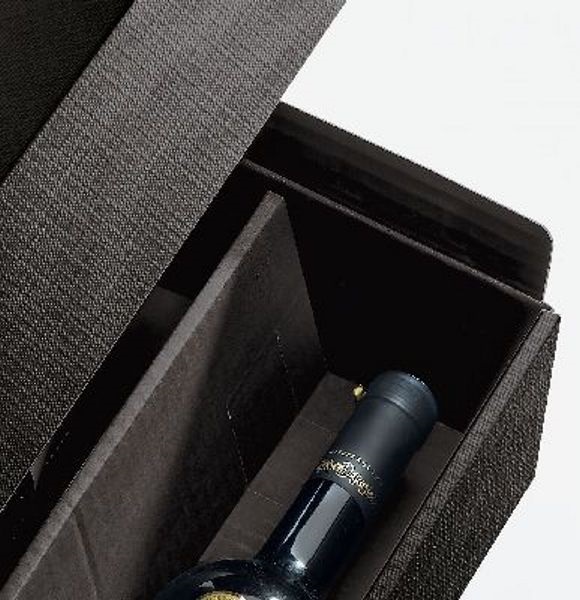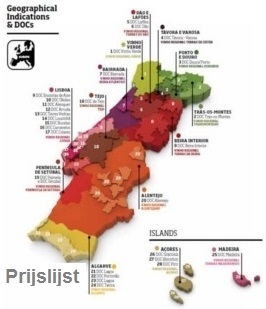Liquen is the Portuguese word for lichen. It's the perfect metaphor for Menina d'Uva's wine project. Lichen is the result of a symbiosis of fungi with a green algae and/or a blue-green algae between which there is a delicate existence. Thus, they symbolize the delicate relationship between man and vine (or nature in general). Only by having a feel for it, you arrive at the refined wines that Aline Domingues makes.
For a wine led by Malvasia, Aline’s white wine, Líquen, is aromatically contained and subtler than one would expect from a wine based principally on this grape. Malvasia always brings a plentiful supply of charm, but this one is in no way excessive in its expression, like many tend to be. Aside from the Malvasia, there is a mix of 30% indigenous grapes with varying percentages between Bastardo Branco, Formosa and Poilta.
Texturally, Líquen is a mouthful despite no intentional skin contact outside of the gentle crush by foot before pressing. The high amplitude metal and mineral sensations in its youth are palate staining and resonate with a streak of fresh acidity down the center and back into the throat. The finish is lengthy and activates all points on the palate, from the front, sides, middle and back. Overall it’s an extremely pleasant wine and its freshness a welcome surprise for a white from this region known for its weighty, less interesting, white wines.
While the Trás-os-Montes is known for heavy wines, Menina d’uva couldn’t be much further from that style. Here, she’s begun to modernize the wines in the best possible way: indigenous local grape varieties, organic farming, naked wines made through gentle extraction and a low-tech, heavily-thought-out, soft-touch approach. The result is a win with soft-colored hues, low-to-medium alcohol with natural freshness and tension. Her wines have heightened aromatic nuances of spring fruits, moorland brush and flowers, with unusually profound minerally and metallic textures that vibrate on the palate.
In 2017, Aline Domingues left Paris for Uva, a remote village on the Planalto Mirandês, a quiet and mostly desolate countryside in northeast Portugal. Born in 1989, in Cergy, a small suburb about twenty-five kilometers northwest of the center of Paris, she was the youngest of four children born to Portuguese parents. Immigrants from Uva, only thirty kilometer from the border of Spain, they came to France in search of better economic prosperity and to escape the dictatorship, like so many Portuguese in the 1960s and ‘70s.
Her red wines are strangers from a distant land. They taste and feel every bit as much like they’re from central or western Galicia, or areas like Saint-Pourçain in France’s Upper Loire Valley, or a Côte Roannaise; or the nearly forgotten Persan from Isère, or even what I can only imagine of the Beaujolais Jules Chauvet made decades ago—not only from the alcohol level, but the tensile ripeness and gentle, attractive amargo of the fruit. The aromas in Aline’s reds are high-toned, fresh and bright, even in her Palomba, a darker red made almost entirely of Negreda, a grape variety that is curiously low in tannin for its dark, thick skins. The smell of both is impactful and vibrant, pure and beguiling, like energized spring fruits and the aromas of arid land with sweet red flowers in bloom—this really describes the red, Ciste. Once in the mouth, the textures are unexpectedly concentrated with vibrant, dense and refreshing mineral and metal sensations. Above all, Aline’s red wines are as beautiful and charming as they are contemplative and serious.
Food pairing
Líquen’s characteristic aromas evoke the sense of highland grasslands with dried flora, rock outcrops and open blue skies. It’s overtly savory, which makes it ideal for food. In fact, it’s kinda like food with its attractive aromas of dried pasta, bread dough, and dried herbs and grasses. The fruit is in the white flesh spectrum, with pear, apple and cherimoya.
Grapes: 70% Malvasia, 30% other traditional grapes (Bastardo Branco, Formosa, Poilta etc.)
This is a white wine from different plots of 40 to 60 years old, cultivated in schist soils with delicate citric aromas and of white fruits. In stainless steel tank, with natural yeasts only. The grapes were foot-trodden and then pressed. After a light settling, the must was transferred to a stainless steel tank for fermentation.
Store & Serve
Serve at a temperature of 10-12 °C. Can now be drunk but will certainly continue to evolve for 2 to 5 years on the bottle. Drink until 6 years after harvest year
Alcoholcontent
13,5%
Critics & Awards
4,1/5 - Vivino (219 reviews)
Wine region: Trás-os-Montes ("behind the mountains") is a Portuguese DOC (Denominação de Origem Controlada) with the same borders as the Transmontano Vinho Regional zone within the Tras-os-Montes e Alto Douro administrative province in the far northeastern corner of Portugal.
The mountains cast a large rain shadow over Transmontano and a wide strip of western Spain beyond. This makes the area one of Portugal's driest. Consequently the best vineyards to qualify for the DOC follow the paths of the region's four main rivers: the Douro, the Sabor, the Tua and the Tamega. Soils are mostly schist with some areas tending toward granite or chalk.
Trás-os-Montes vineyards sit at varying altitudes and as a result produce various wine styles. Vineyards located in cooler, higher areas typically produce wines that are lighter in body and lower in alcohol, while the lower-lying areas are the source of fuller-bodied wines that are often perceptibly high in alcohol. Some of the higher vineyards in the region supply grapes for Portugal's most famous wine, the semi-sweet, lightly sparkling rosé, Mateus.
There are four subregions, classified as IPRs (Indicação de Proveniência Regulemtada); Chaves in the west is known for firm, dry red wines, while Planalto Mirandès in the east and Varosa produce light red wines and crisp, fresh, sometimes slightly sparkling white wines. Valpaços also produces light fruity reds often drunk with a local cake called Folar.
A wide selection of indigenous and international red and white grape varieties are grown and permitted within the DOC. Here are some common Trás-os-Montes whites (you’re on your own with the pronunciation): Viosinho, Arinto, Rabo de Ovelha, Donzelinho Branco, Gouveio (Verdelho), Códega do Larinho, Malvasia Fina, Fernão Pires, Malvasia Fina, Rabigato, and Síria. Some reds: Touriga Nacional, Touriga Franca, Tinta Francesa, Tinta Cão, Bastardo (Merenzao in Spain; Trousseau in France), Tinta Amarela (Trincadeira), Tinta Barroca, Marufo, and Tinta Roriz (Tempranillo). There are many more, but this is a good start.
Tags: Tràs-os-Montes
 Ordering per bottle possible
Ordering per bottle possible Sharp prices
Sharp prices Secure payment
Secure payment Low shipping cost
Low shipping cost  Free shipping in Belgium on orders over €250 or radius of 10 km around Tremelo
Free shipping in Belgium on orders over €250 or radius of 10 km around Tremelo




